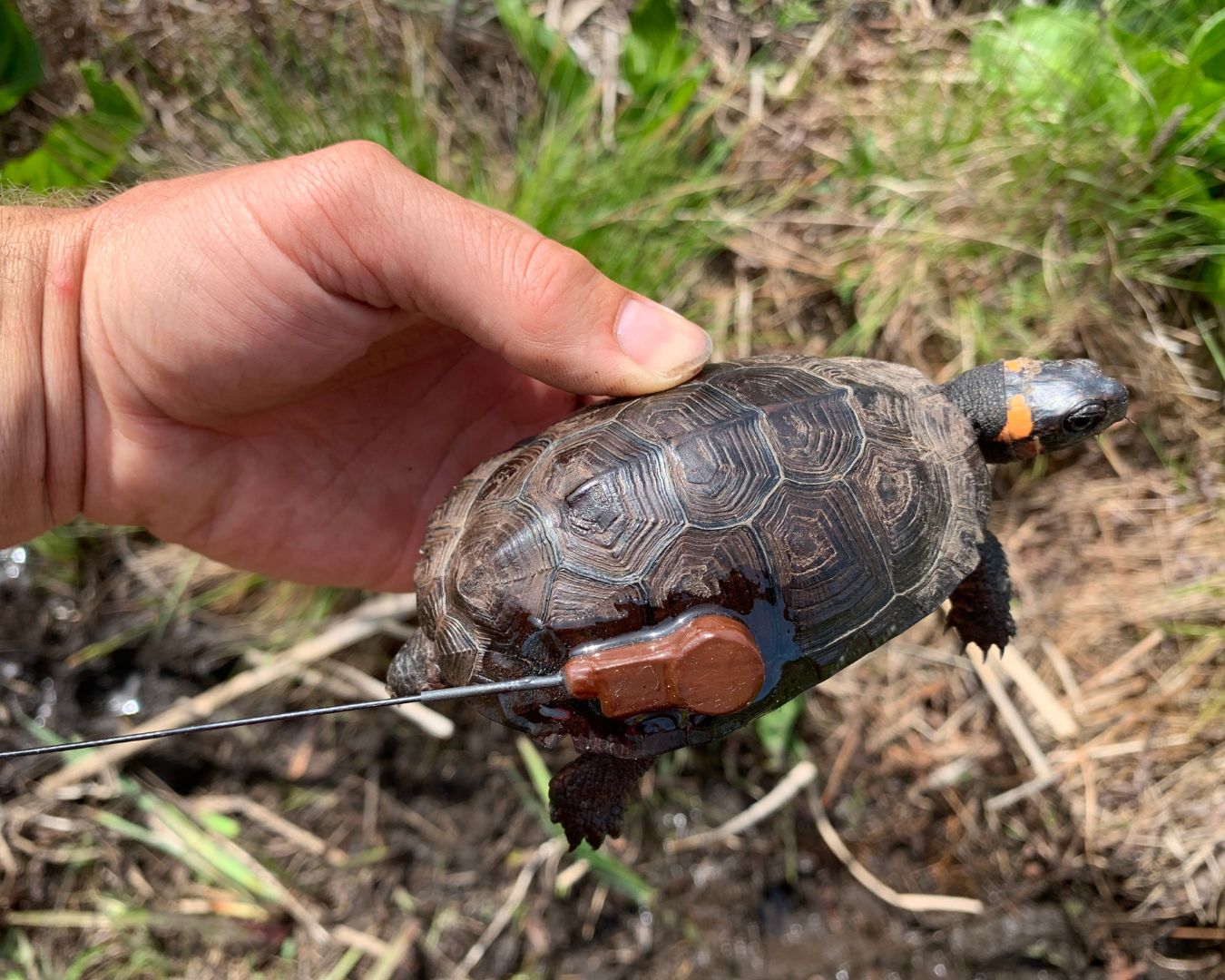Newest Turtle Survival Alliance-North American Freshwater Turtle Research Group initiative seeks to elucidate the spatial ecology of Bog Turtles in New Jersey
by Jordan Gray
Bog Turtle. For turtle enthusiasts the world over, those two words commonly incite an innate reaction for this not-so-common turtle. That reaction is often one of awe, fascination, and even desire. This diminutive, cryptic, mahogany-colored turtle featuring prominent orange, red, yellow, and even white blotches on the sides of its head is, for many, “the grail turtle.” For those dedicated to the Bog Turtle’s (Glyptemys muhlenbergii) survival in the wild, active and often intensive measures are necessary to ensure the “grail” stays safe.
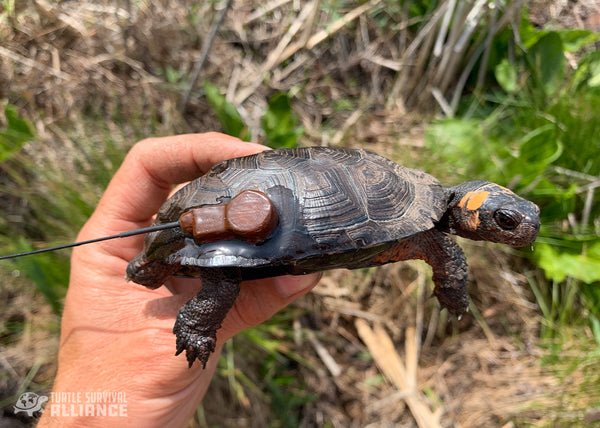
Photo 1: A Bog Turtle displaying a newly outfitted radio transmitter. Credit: Colin Osborn
A successful quest to observe this species in the wild is for the lucky, the skilled, or, frequently, both. Luckier still is the ability to observe, research, and record their natural history, biology, and ecology, and perform conservation actions for their survival. And, because they are protected by the Endangered Species Act as Threatened, the ability to do so requires state and federal permits. In 2023, the Turtle Survival Alliance-North American Freshwater Turtle Research Group (NAFTRG) was afforded the opportunity to commence a research initiative to study the spatial ecology of Bog Turtles at an undisclosed population in northern New Jersey, where it is listed as State Endangered and a Northeast Regional Species of Greatest Conservation Need.
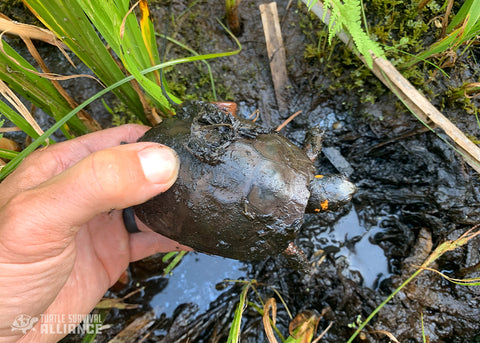
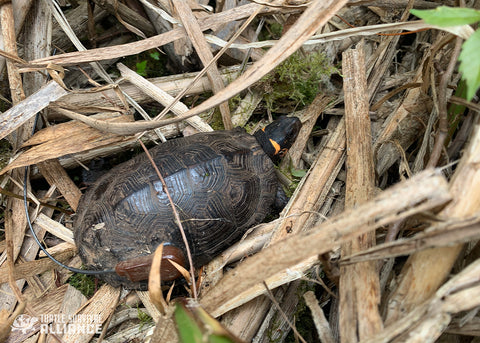
Photos 2 & 3: Bog Turtles are notoriously cryptic, spending much of their time hidden beneath mud or amongst dense vegetation. Credit: Colin Osborn
The Bog Turtle is native to the Eastern United States, ranging from northeast Georgia to Massachusetts and western New York. The species lives in two disjunct management units, northern and southern, separated by ~270 miles (436 km). Although called the Bog Turtle, the species lives in stream-, spring-, and seep-fed fens, sedge meadows, sphagnum bogs, marshes, and open shrubby swamps. All of these habitats are highly imperiled, fragmented, and commonly isolated, as are their resident turtles—so much so that the Bog Turtle is considered Critically Endangered by the International Union for the Conservation of Nature. Of the states inhabited by Bog Turtles, New Jersey still holds some of the strongest populations, despite being situated between New York City and Philadelphia, the United States’ first and sixth most populated metropolises, respectively.
The newest project of NAFTRG, in collaboration with the New Jersey DEP’s Fish and Wildlife Endangered and Nongame Species Program and State Herpetologist Brian Zarate, and generously funded by TC Energy Corporation, seeks to further understand a small population of Bog Turtles through radio telemetry at a site that, until this year, has only been surveyed via visual encounter methods, with a relatively low number of turtles captured. Through radio telemetry, the goals of this initiative are to gather year-round data on turtle locations, ecology, and critical life histories such as behavior, unique home ranges, nesting sites, and overwintering hibernacula.
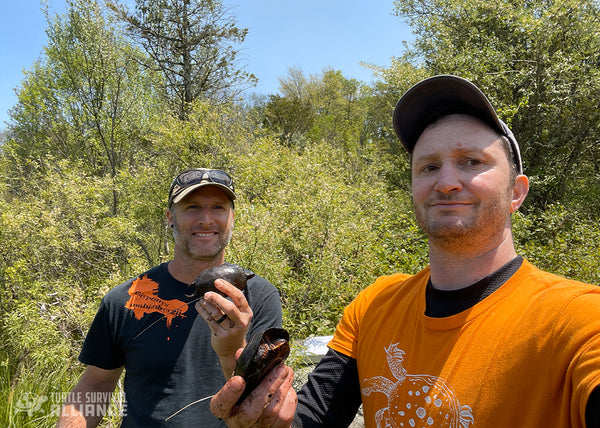
Photo 4: Colin Osborn and Joe Pignatelli, certified Bog Turtle technicians, hold turtles equipped with radio transmitters this spring. Credit: Joe Pignatelli
Tracking data gained from our study of Bog Turtles at this site in northern New Jersey will be used to best inform future habitat management actions to ensure “the grail turtle” persists in its shallow wetland homes long into the future.
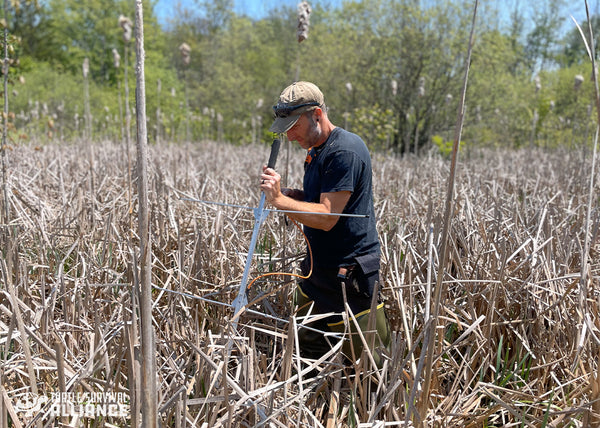
Photo 5: Colin Osborn performs radio telemetry for Bog Turtles in a northern New Jersey wetland. Credit: Joe Pignatelli
